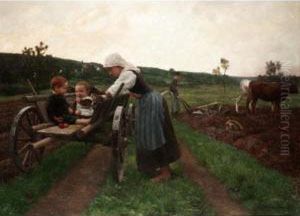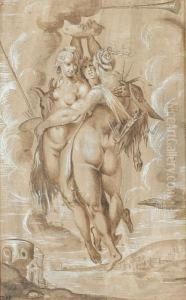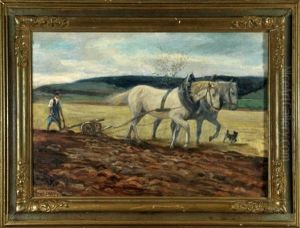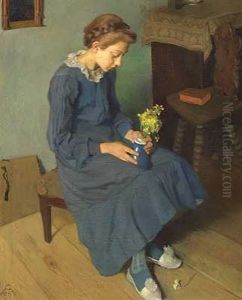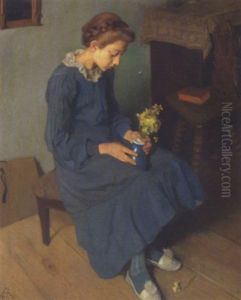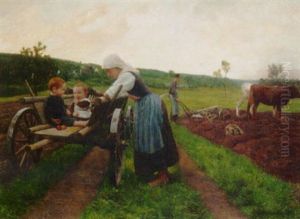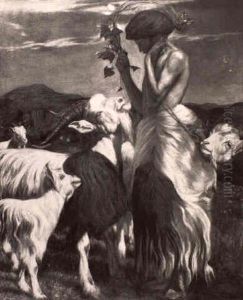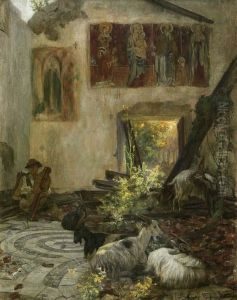Georg Mayer-Franken Paintings
Georg Mayer-Franken was a German artist born on August 21, 1870, in Nuremberg, Bavaria. He was primarily known for his work as a painter, and he played a significant role in the German art scene during the late 19th and early 20th centuries. Mayer-Franken received his artistic training at the Nuremberg School of Fine Arts and later at the Academy of Fine Arts Munich. His education was classical, focusing on drawing and painting, which was typical for artists of his time.
Mayer-Franken's body of work mostly comprises portraits, landscapes, and genre scenes. He was adept at capturing the essence of his subjects, which ranged from rural Bavarian life to the more urban experiences in cities like Munich where he spent a significant part of his career. His style was influenced by the Impressionist movement, although he did not fully adhere to its principles. Instead, he blended impressionistic tendencies with a more traditional, realist approach, which gave his works a distinctive character.
Despite the popularity of modern movements like Expressionism in Germany during his lifetime, Mayer-Franken remained committed to his style, which garnered him admiration as well as criticism. His works were exhibited in various German cities, and he participated in important exhibitions of the time, which helped establish his reputation as a skilled painter.
Mayer-Franken was also involved in teaching; he believed in passing on his knowledge to the next generation of artists. In 1911, he became a professor at the Academy of Fine Arts in Munich, a position he held until his death, influencing many young artists through his guidance and instruction.
Georg Mayer-Franken's life was cut short when he passed away on January 18, 1926, in Munich. Although he did not live to see the radical changes that would sweep through the art world in the mid-20th century, his works remain a testament to the artistic traditions of his time and continue to be appreciated for their craftsmanship and beauty. His paintings can still be found in various art collections and museums in Germany and beyond.
